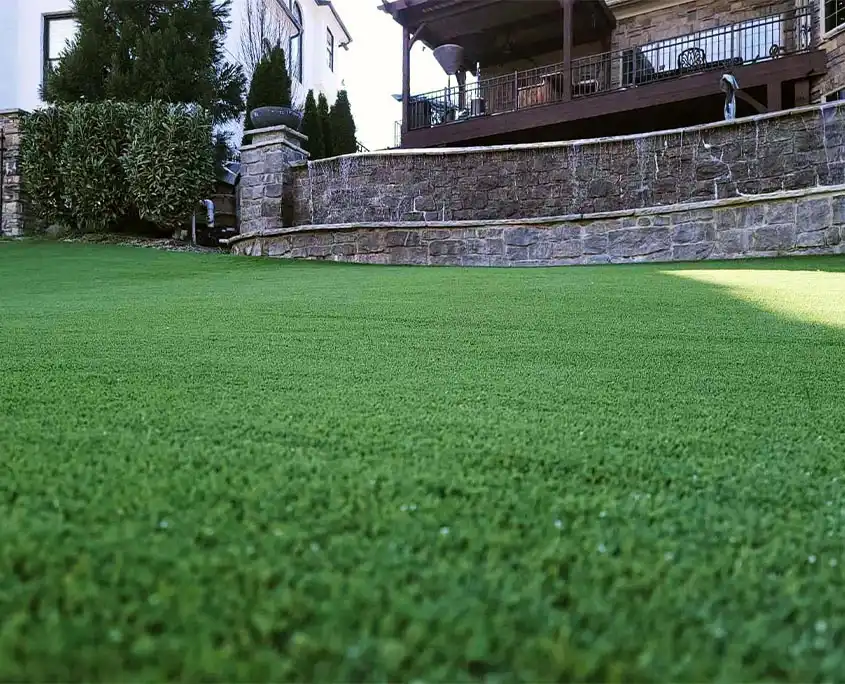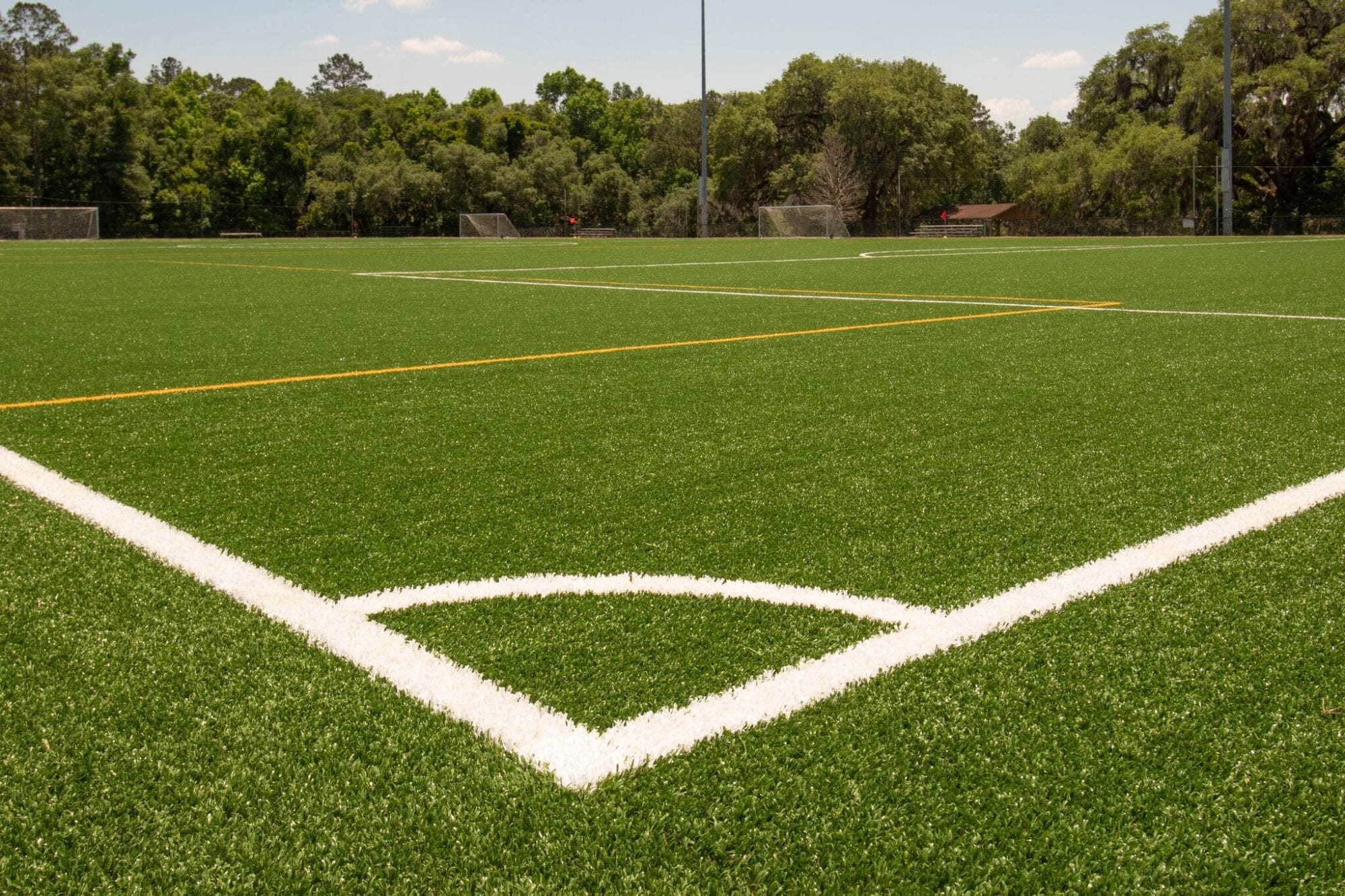Top Arizona Turf Suppliers Ensuring a Natural-Looking Lawn Option
Top Arizona Turf Suppliers Ensuring a Natural-Looking Lawn Option
Blog Article
Explore the Environmental Advantages of Opting for Synthetic Grass Solutions
The fostering of fabricated turf options provides a compelling opportunity to attend to pressing ecological obstacles. By significantly reducing water usage and decreasing the application of dangerous chemicals, these options not just advertise lasting landscape design yet also protect local environments.
Water Preservation Conveniences
Among one of the most substantial benefits of fabricated lawn is its capacity to preserve water. Standard lawn yards need considerable irrigation, especially in areas prone to dry spell or water constraints. On the other hand, man-made grass does not need watering, significantly reducing the total need for water resources. This feature is particularly advantageous in deserts where water shortage is a pressing concern.
By eliminating the demand for routine watering, artificial grass contributes to sustainable landscape practices and assists mitigate the ecological effect of excessive water consumption. The conservation of water prolongs to the decrease of runoff, which can lead to dirt disintegration and waterway pollution.
Additionally, the installment of synthetic grass permits towns and homeowners to allocate water resources a lot more efficiently, concentrating on necessary usages such as drinking water and agriculture. The shift in the direction of synthetic grass not just advertises liable water usage but likewise straightens with broader environmental objectives focused on maintaining natural deposits.
As areas increasingly prioritize sustainability, the water conservation benefits of synthetic grass present a compelling case for its adoption in domestic and industrial landscape design tasks.
Reduced Chemical Usage
The shift to synthetic grass considerably reduces the reliance on chemical treatments typically made use of in all-natural turf upkeep. Typical lawn management usually involves the application of fertilizers, herbicides, and chemicals to promote growth and control pests. These chemicals can posture threats to human wellness, local wild animals, and the setting, adding to dirt and water contamination.
In comparison, fabricated lawn removes the requirement for these unsafe materials. By lessening the release of synthetic substances into the ecological community, synthetic turf advertises healthier soil and water systems.
In addition, the lack of chemical runoff connected with synthetic grass installations helps safeguard neighborhood rivers from pollution, sustaining marine life and keeping biodiversity. Turf installation phoenix az. As neighborhoods significantly prioritize sustainable methods, selecting man-made grass offers a practical option that straightens with ecological preservation goals. Through this shift, homeowner can delight in rich eco-friendly areas without endangering ecological wellness, leading the means for a more sustainable future
Reduced Carbon Impact

Additionally, the setup of artificial turf can result in considerable water preservation. All-natural grass call for considerable amounts of water for irrigation, which not only includes to the carbon impact linked with water removal and therapy yet additionally strains local water resources. On the other hand, synthetic turf needs very little maintenance, needing no watering, consequently significantly decreasing water usage and its associated power prices.
In addition, the long life of Recommended Site synthetic grass adds to its lower carbon effect. With a life expectancy of as much as 15 years or more, the demand for constant substitutes is diminished, resulting in less waste and lower energy intake in production and dealing with conventional turf alternatives. Overall, synthetic grass offers a sustainable option for environmentally aware landscape design.
Habitat Preservation
Environment preservation is a vital consideration in the debate over landscape design options, particularly when contrasting synthetic grass to natural yard. Natural grass yards frequently call for substantial maintenance, consisting of using herbicides, plant foods, and pesticides, which can detrimentally affect neighborhood ecosystems. These chemicals can leach into the dirt and waterways, hurting native vegetation and fauna and interfering with local environments.
Fabricated lawn eliminates the need for damaging chemicals, consequently securing close-by wildlife and preserving the stability of bordering communities. The setup of synthetic grass can lead to the conversion of former grass areas right into even more biodiverse landscapes, such as pollinator gardens or native plant areas, which can sustain neighborhood wild animals.
Ultimately, the shift to synthetic grass not only conserves water and decreases maintenance efforts yet likewise promotes a more harmonious connection between human tasks and the native environment, advertising habitat preservation at the same time.
Long-Term Sustainability
Long-lasting sustainability is an important factor in reviewing the benefits of synthetic grass over standard turf yards. Among one of the most considerable benefits of synthetic grass is its toughness; it can last as much as 15-20 years with very little upkeep, whereas all-natural grass requires constant reseeding and substitute. This long life decreases the need for continuous resources, such as water, fertilizers, and pesticides, which are essential for keeping a healthy and balanced yard yard.
Additionally, artificial grass adds to a decrease in carbon emissions connected with lawn care tools. Traditional lawns frequently call for gas-powered mowers, trimmers, and blowers, every one of which add to air contamination. Turf installation phoenix az. In contrast, artificial dig this grass removes the demand for such devices, promoting a cleaner setting
Furthermore, the manufacturing of synthetic grass significantly utilizes recycled materials, enhancing its sustainability profile. As manufacturers take on green methods, the environmental impact of artificial turf proceeds to lessen.

Verdict
The fostering of synthetic grass remedies presents considerable ecological advantages, consisting of substantial water conservation, decreased dependence on harmful chemicals, and a reduced carbon impact. Moreover, man-made grass aids in preserving natural environments by lessening land disruption and promoting long-lasting sustainability with using durable products. Collectively, these factors highlight the possibility of synthetic grass to add positively to ecological health and wellness and use a feasible alternative to typical landscape design practices in an increasingly straight from the source resource-conscious globe.
In comparison, fabricated grass does not need watering, considerably lowering the overall need for water sources. By minimizing the release of synthetic compounds into the environment, synthetic grass promotes much healthier dirt and water systems.
In addition, the installation of artificial grass can result in considerable water conservation. In contrast, synthetic lawn requires very little maintenance, calling for no watering, consequently substantially lowering water use and its connected power costs.

Report this page